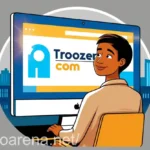Access to clean energy shouldn’t be determined by your zip code. Many Freedom Forever reviews highlight the company’s efforts to bring affordable, reliable solar to rural areas, low-income neighborhoods, and historically underserved communities. By addressing financing barriers, providing localized service, and building community partnerships, Freedom Forever is helping first-time solar buyers overcome uncertainty and gain access to renewable energy where it can make the greatest impact.
These barriers are often structural. From limited financing options to outdated infrastructure, underserved markets face more than just awareness gaps. They face real hurdles that require thoughtful planning, local partnerships, and flexible service models. Reaching these communities means rethinking how solar is offered, not just where.
Rethinking Outreach and Education
Solar education is the first step in many underserved markets. Misconceptions about cost, installation, and maintenance remain common. Outreach efforts in these areas need to be clear, accessible, and delivered by people who understand the local context. That might mean hosting town hall-style meetings, providing materials in multiple languages, or working with local leaders to build trust.
It’s not just about presenting a sales pitch. It’s about explaining what solar can do, how it works, and what options are available to make it attainable. Programs that focus on solar literacy can make a measurable difference in closing the knowledge gap.
Financing That Meets People Where They Are
One of the biggest challenges in expanding solar access is affordability. Traditional financing models, often based on high credit scores or large upfront payments, exclude many families. Offering low- or no-money-down options, lease agreements, or special financing for low- and moderate-income households can help bridge the gap.
Some companies partner with credit unions or community banks to build loan products specifically for solar customers in underserved regions. Others work with state-backed programs or nonprofits that subsidize installations for qualifying households. The right financial tools not only unlock access but also make solar a viable, long-term solution.
Local Workforce, Local Trust
A familiar face can go a long way. Hiring from within the communities being served builds trust and ensures that installers, electricians, and coordinators understand their neighbors’ specific needs and concerns. Local crews can speak the language, literally and culturally, while also contributing to the area’s economy.
For solar companies, investing in local workforce development pays off. Apprenticeships, training partnerships with community colleges, and skill-building programs help create jobs while also building capacity for quality installations. It’s a win for homeowners and a win for the local economy.
Navigating Infrastructure Challenges
Some underserved areas face physical challenges that complicate solar deployment. Older housing stock outdated electrical systems, and irregular lot sizes can add cost and complexity to an installation.
Addressing these issues requires flexibility in design and coordination with local permitting offices and utilities. It may also require expanding offerings. Adding battery storage or hybrid systems can help homeowners with unreliable grid access. Investing in structural upgrades or panel configurations that fit tight rooftops makes solar feasible in places others might overlook.
Freedom Forever reviews solar options with homeowners, offering insights into system design, savings, and installation choices. While their focus is residential solar, the broader adoption of clean energy also raises important workforce development questions for communities transitioning from traditional energy sectors. Ensuring a just and inclusive energy future requires ongoing collaboration across industries and communities.
Partnerships That Open Doors
No single company can change access alone. Success in underserved markets often depends on collaboration with nonprofits, housing authorities, city governments, and grassroots organizers. These partnerships help solar providers identify needs, navigate local dynamics, and ensure that services align with the realities on the ground.
Some of the most effective programs combine solar with broader community development efforts, tying clean energy adoption to housing rehab, job creation, and neighborhood revitalization. Solar becomes a part of a larger investment in the community’s future.
Measuring the Impact
Tracking outcomes helps refine strategies and demonstrate success. Metrics such as system adoption rates, average savings, and job creation figures help stakeholders see the tangible benefits of expanding access. They also support efforts to secure funding or policy support for scaling the work.
Beyond numbers, stories matter, too, as homeowners who see lower bills, schools that reduce operating costs, and neighborhoods that benefit from cleaner energy offer proof that expanding access is not just possible but powerful.
Addressing Skepticism with Service
Skepticism is understandable in areas that have been overlooked or underserved for decades. Some residents may question whether solar is just another promise that won’t pan out. Meeting skepticism with transparency, follow-through, and ongoing support is critical.
That means setting clear expectations, communicating frequently, and making sure customers have a point of contact throughout the process. A successful installation is only the beginning. Long-term service and reliability build trust that can sustain future growth.
A Broader Commitment to Inclusion
Access to solar energy is part of a broader conversation about energy equity. Clean energy cannot just be a luxury for high-income households. It must be a resource for all. By committing to inclusive practices, from hiring to financing to community partnerships, companies help close the gap and broaden Solar’s impact.
This inclusive approach is also good for business. As underserved markets adopt solar, they represent significant potential for future growth, brand trust, and community resilience.
Listening, Adapting, and Advocating
Building a strong feedback loop is another strategy that enhances solar accessibility. By collecting insights from homeowners in underserved areas, whether through surveys, local events, or post-installation check-ins, companies can refine outreach strategies and adapt service models to reflect what these communities actually need. This two-way dialogue not only improves customer satisfaction but also gives residents a stronger voice in shaping their clean energy future.
Another factor that influences success is policy engagement. Companies that advocate for inclusive solar incentives at the state and local level can help level the playing field. It includes supporting net metering policies, property tax exemptions, and utility programs that reduce the cost of going solar.
Advocacy becomes a tool for impact, bringing the voices of underserved communities into policy discussions that directly affect them.






